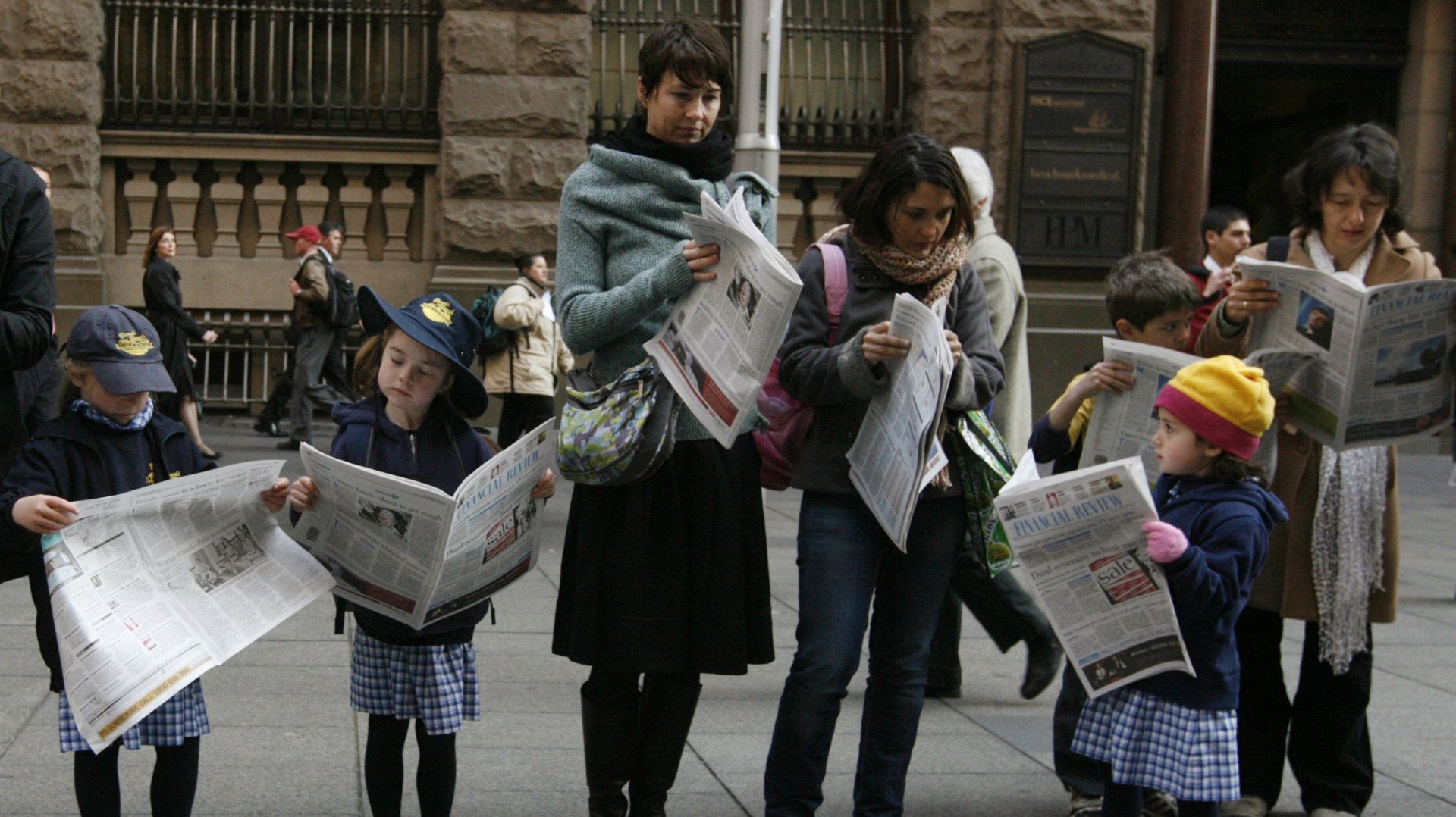Even social media-savvy teens can’t spot a fake news story
Kids are famously tech-savvy compared to their luddite parents. But when it comes to fake news, they seem as confused as the rest of us.


Kids are famously tech-savvy compared to their luddite parents. But when it comes to fake news, they seem as confused as the rest of us.
Thirty-one percent of kids aged 10 to 18 shared a news story online that they later found out was wrong or inaccurate, while only 44% say they can tell a fake news story from a real one, research published by Common Sense Media finds.
“Fake news and ‘alternate facts’ were not a problem in society two years ago,” said Jim Steyer, founder and CEO of the non-profit, which promotes safe media and technology for children. “It has been deeply accelerated by the Trump phenomenon.”
The study, called “News and America’s Kids,” surveyed 853 kids aged 10 to 18 across the US in January. It looked at where kids got their news, and what they thought of it. It also looked at how media consumption changes from when kids are tweens—ages 10 to 12—to when they are teens, ages 13 to 18.
One positive finding from the report was that kids value news, and think it benefits them to read it: 70% of respondents said the news made them feel smart and knowledgeable, and nearly half said that following the news was important to them.
But only one-quarter of the group put ‘a lot’ of trust in the information they receive from news organizations. And on the whole the group doesn’t think the news is balanced in terms of race, sex, and relevance to them. Only one-third of the kids surveyed say the media treats women and men fairly; less than one-third say the news treats people of different racial and ethnic backgrounds fairly. (A Knight foundation report with a much smaller sample size found the same thing). “Kids understand that their lives are not covered” by the news, said Steyer.
Sorting through the sources
Kids get more of their news from family, teachers, and friends than they do from other sources. For the survey, pollsters asked kids where they got their news “yesterday” to avoid errors surrounding poor recall (few of us remember where we got our news, say, a week ago).
Sixty-three percent of all kids got their news from family, friends, or teachers, compared to 49% who got it online. About the same share (46%) got their news from traditional media (TV, print, and radio), with print newspapers, not surprisingly, showing the smallest share.
Here’s the breakdown:
But the numbers vary widely when you break it down by age: Tweens still rely on parents, teachers, and other grown-ups, while teens steer more toward social media and websites and apps.
There’s a huge gap between tweens and teens on social media:
The gap is also there for websites and apps:
The gap between the ages shrinks when looking at what percentage of them get their news from family:
…and widens again among kids who get their news from newspapers (which very few of them actually do):
Adults, by comparison, get far more news from television, and far less from social media. Data from the Pew Research Center and cited in the report found adults get 46% of their news from local TV, 31% from cable TV, and only 18% from social networking sites. More than a quarter report that they get their news from websites or apps.
Among teens, the Common Sense report notes a preference for Facebook as a news source (41%), while tweens break between YouTube (41%) and Facebook (37%). By huge margins, girls prefer Facebook for news, and boys, YouTube.
Steyer says schools need to reinstate current events classes—which have been cut in a long-term effort to double down on “core” subjects like math and reading and science. Media groups also need to create kid-friendly content. ”A healthy society needs a real focus on young people and kids, and the news media has a critical role in this,” he said.
When asked what issues they cared about, kids focused more on technology and education than politics or crime: